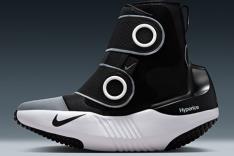Cyclocross
Physical Demands:
- Cyclocross is similar to mountain biking in that there are many short and intense bursts of power followed by relatively short periods of coasting. There are also sustained periods of 1 to 2 minutes of hard efforts.
- Cyclocross Involves some running and carrying of the bike, which won't show up on your computer's power profile even though it requires hard effort.
Mental Demands:
- In a cyclocross race, almost everyone makes at least one mistake. It's necessary to learn from these mistakes and move on. Focus on riding in the moment.
- These races are short, but they sure do hurt. Be ready to endure the pain and know that it'll only last 30 to 60 minutes, depending on the category.
- Weather conditions are often terrible during cyclocross season. Frigid temperatures, mud, snow and wind are all elements you'll have to get used to. Everyone has to deal with the same conditions, and it's not going to be easy. Try to remain mentally strong and don't let aspects outside of your control affect you.
Workout: Microbursts of 15 to 30 seconds. The "on" segments should be done at 150-percent FTP followed by 15 to 30 seconds "off" at less than 50 percent FTP. Repeat for 10 minutes, rest for 5 minutes, and repeat.
More: The Basics of Lactate Threshold Interval Training
Track
Physical Demands:
- Races range from 200 meters (10 to 11 seconds) to 50-kilometer points races (1 hour or more). Track racers usually specialize and train specifically for events of similar distances.
- Track cycling requires a high level of aerobic and anaerobic fitness, depending on the race.
- Fuel demands can be difficult to manage if you're doing multiple events on a single day of racing. Learning to recover properly between events is a critical skill.
- Huge maximal power efforts will be required. Pedaling at high cadences is also necessary since track racers only have one gear.
Mental Demands:
- Strategy and tactics play a huge role in race-day success.
- Track cycling requires plenty guts and aggressiveness. Cyclists can reach speeds of over 50 mph on bikes that are not equipped with brakes. Riders must have excellent bike handling skills and learn to move around a paceline or pack safely and efficiently.
Workout: Strength training plays a larger role in track cycling than in any other discipline of cycling. You'll need leg strength to sustain high speeds and maximal power bursts for long periods of time. On the bike strength work such as hill repeats and standing starts should be done a few times per week. Find a stretch of road with multiple stop signs. Practice stopping at each sign with a track stand. When it's your turn to go, sprint all out for the first 20 to 30 meters. Repeat 10 to 15 times.
Many cyclists think that they have to specialize in one discipline of cycling. In reality, most riders would benefit from mixing it up. Each discipline is distinct and the skills and physiological adaptations acquired from each will help you become a better cyclist. Spice up your training and try a new discipline of cycling this offseason.
More: 6 Cycling Drills to Improve Sprinting Speed
 Ready to ride? Search for a cycling event.
Ready to ride? Search for a cycling event.
- 2
- of
- 2
About the Author









Discuss This Article